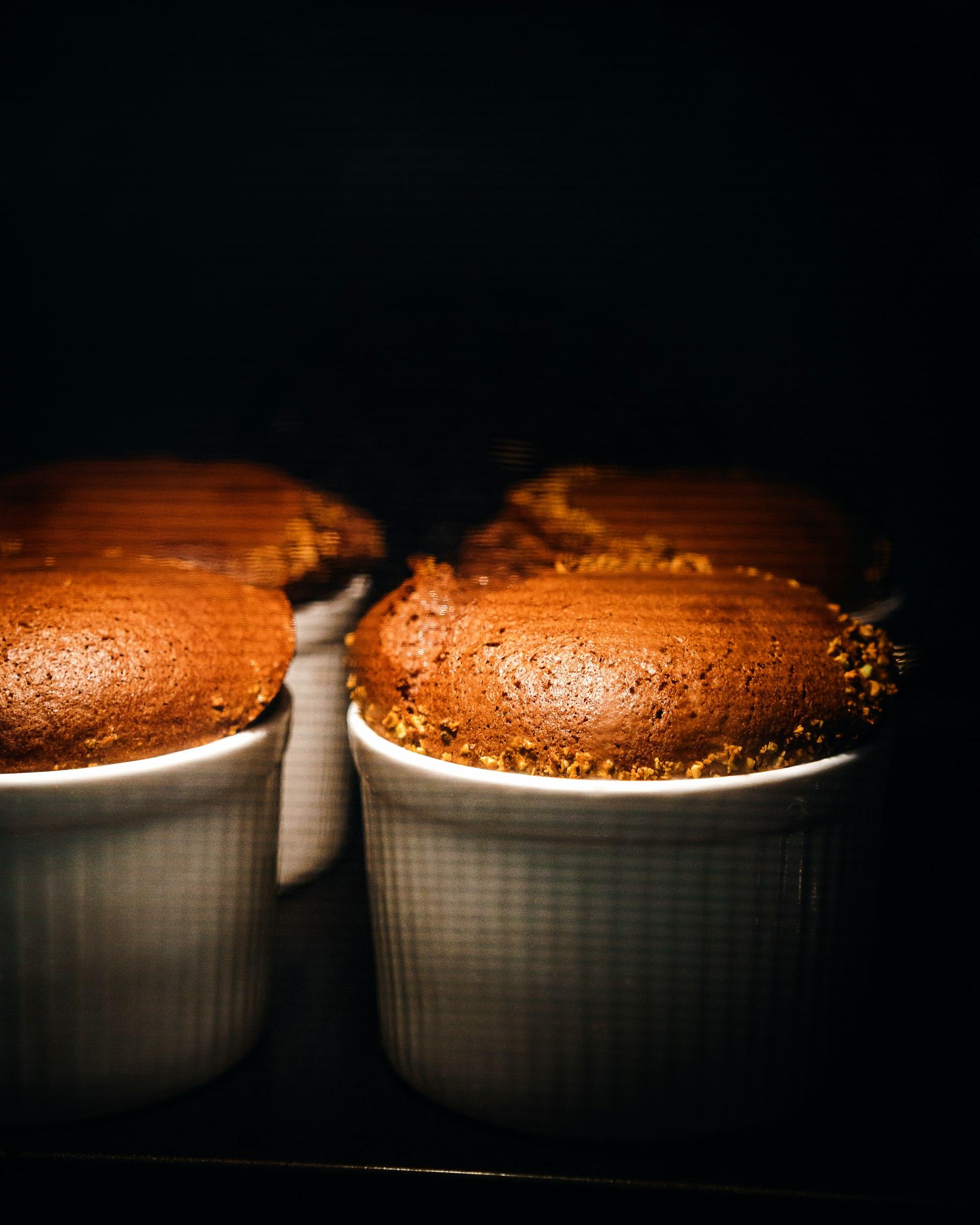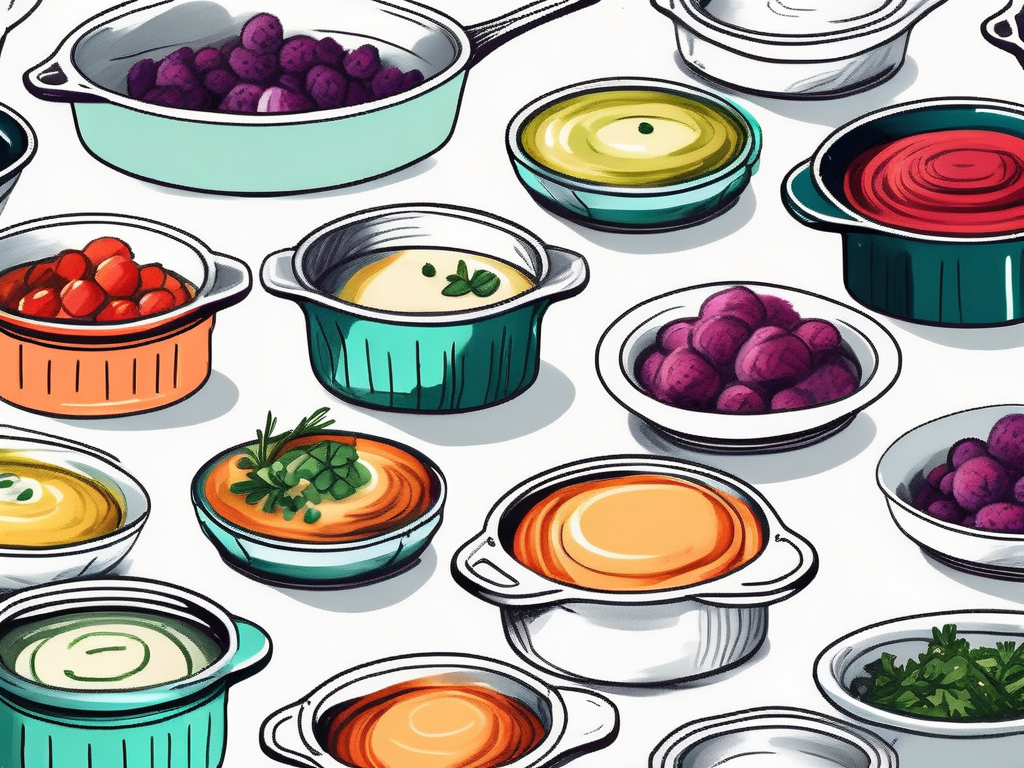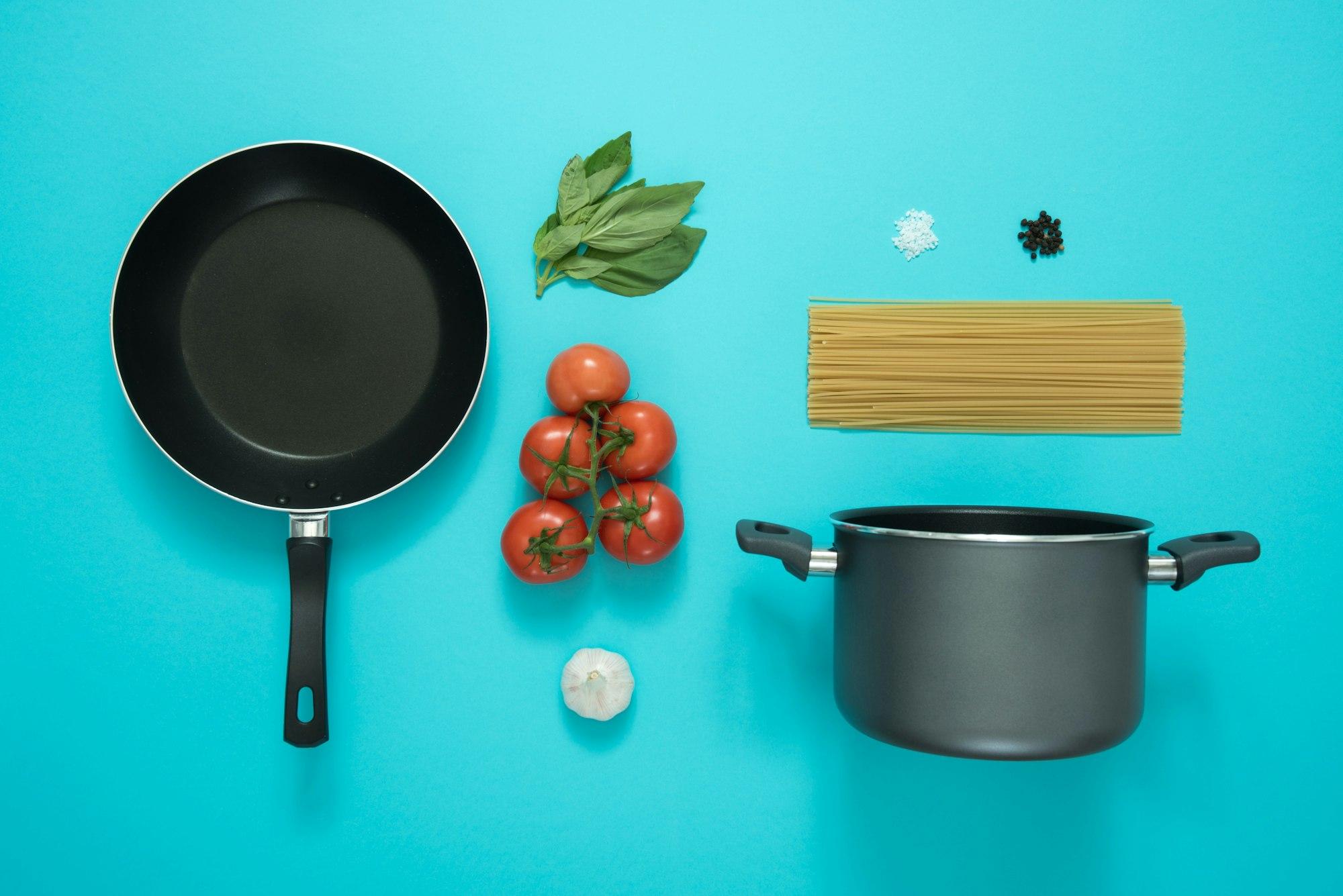What is a Ramekin?
This small but mighty dish is perfect for baking and serving individual portions. From savory soufflés to decadent desserts, discover how a ramekin can add versatility and charm to your kitchen.

Have you ever found yourself marveling at the quaint, yet sophisticated presentation of a dessert or a side dish at a fancy restaurant, wondering how they achieve such perfection? The secret often lies in a small but mighty kitchen accessory: the ramekin. This seemingly simple dish is a powerhouse of versatility in the culinary world, and its uses extend far beyond what meets the eye.
The Origins and Evolution of Ramekins
The journey of the ramekin from a humble kitchen utensil to a staple of culinary presentation is as rich and varied as the dishes it helps create. Understanding its history not only adds depth to our appreciation but also inspires innovation in our own cooking.
Historical Background
The term "ramekin" originated from the French word "ramequin," which was used in the 18th century to describe a cheese-based dish. Over time, the term evolved to refer not just to the dish itself but also to the small, cylindrical bakeware used to prepare and serve it. This evolution marks the ramekin's transition from a recipe name to a versatile kitchen tool.

Initially made from porcelain, ramekins were designed to withstand high temperatures, making them perfect for baking. Their durability and heat resistance were key to their popularity, allowing chefs and home cooks alike to explore a range of baked dishes, from savory to sweet.
Modern-Day Ramekins
Today, ramekins are made from a variety of materials, including ceramic, glass, silicone, and even metal. Each material offers its own set of benefits, from the even heat distribution of ceramic to the flexibility of silicone. This diversity in materials has expanded the ramekin's utility in the kitchen, making it a go-to for individual servings of a wide array of dishes.
Modern ramekins also come in a range of sizes and designs, from plain and functional to ornate and decorative. This versatility in appearance makes them not just a cooking tool but also a presentation asset, adding an elegant touch to any table setting.
Exploring the Uses of Ramekins
Ramekins may be small, but their potential uses in the kitchen are vast. From baking and serving to storage, these little dishes prove that great things indeed come in small packages.
Baking and Cooking
Perhaps the most obvious use of ramekins is for baking. They are perfect for individual servings of custards, soufflés, pot pies, and more. The ramekin's design allows for even heat distribution, ensuring that each dish is cooked perfectly throughout. This is particularly important for delicate recipes like soufflés, where even cooking is crucial to achieving the desired rise.
But their utility doesn't stop at baking. Ramekins can also be used for setting and serving chilled dishes, such as panna cotta or cheesecake. Their individual serving size makes them ideal for portion control and adds a personal touch to meal presentation.
Serving and Presentation
Ramekins aren't just for cooking; they're also perfect for serving. Use them to hold dips, sauces, or condiments, adding a touch of elegance to your table setting. They can also be used for serving small appetizers or desserts, making each guest feel special with their own individual dish.
Their aesthetic appeal isn't limited to traditional table settings. Ramekins can also be used creatively in food photography, where their size and shape can help highlight the beauty of the dish they contain.
Storage and Organization
Beyond their culinary uses, ramekins can serve practical purposes in the kitchen. Use them to organize ingredients while cooking, holding everything from chopped herbs to spices. This not only keeps your workspace tidy but also streamlines the cooking process, making it easier and more enjoyable.
They can also be used for storing small leftovers, making them a sustainable option for reducing food waste. Their compact size makes them ideal for storing in the refrigerator or freezer, saving space while keeping your leftovers fresh.
Caring for Your Ramekins
To ensure your ramekins last a lifetime, proper care and maintenance are essential. Here's how to keep them in tip-top shape.

Cleaning and Maintenance
Most ramekins are dishwasher safe, making cleanup a breeze. However, for ramekins made from materials like silicone or metal, hand washing with warm soapy water is recommended to preserve their integrity. Avoid using abrasive cleaners or pads, as these can scratch and damage the surface.
For stubborn stains or baked-on food, soaking the ramekin in warm soapy water before washing can help loosen debris, making it easier to clean.
Storage Solutions
When not in use, ramekins can be easily stacked and stored in a cupboard or shelf. If you're storing ramekins made from materials that could chip or break, consider placing a layer of paper towel or cloth between each ramekin to prevent damage.
For those with limited kitchen space, hanging racks or magnetic strips can be a creative way to store metal ramekins, keeping them within easy reach while saving valuable cabinet space.
Enhancing Your Culinary Skills with Ramekins
Now that you're familiar with the history and versatility of ramekins, let's delve deeper into how you can elevate your culinary skills using these small but mighty dishes.
Experimenting with Flavors and Textures
Ramekins provide an excellent opportunity to experiment with different flavor combinations and textures. Try creating individual savory tarts with a variety of fillings, from classic quiches to innovative vegetable medleys. The small size of ramekins allows you to customize each serving according to your preferences, making them perfect for culinary exploration.
For dessert lovers, ramekins offer endless possibilities for creating decadent treats. From molten chocolate cakes to fruit crumbles, these individual portions allow you to indulge in a sweet escape without the need for large baking pans.
Hosting Memorable Dinner Parties
Impress your guests by incorporating ramekins into your dinner party menu. Serve elegant appetizers like baked brie with cranberry compote in individual ramekins for a sophisticated start to the meal. For the main course, consider preparing individual portions of classic dishes like beef bourguignon or coq au vin, each presented beautifully in its own ramekin.
When it comes to dessert, ramekins shine once again. Create a DIY dessert bar with various components like mousse, crème brûlée, and tiramisu, allowing guests to assemble their own sweet creations using ramekins as their canvas.
Exploring Global Cuisines
Ramekins are not limited to any specific cuisine, making them versatile tools for exploring global flavors in your own kitchen. Use ramekins to create individual servings of international favorites, such as Spanish flan, Italian panna cotta, or Mexican chile rellenos. The individual portions allow you to experience a variety of tastes without committing to a large batch of a single dish.
By incorporating ramekins into your culinary repertoire, you can embark on a culinary journey around the world, discovering new flavors and techniques along the way.
Final Thoughts
The humble ramekin is a testament to the idea that the simplest tools can be the most versatile. Whether you're a seasoned chef or a home cook, incorporating ramekins into your kitchen repertoire can elevate your cooking and presentation to new heights. From their rich history to their myriad uses, ramekins are more than just dishes; they're an essential part of the culinary experience, blending functionality with elegance in every use.
Ready to find the perfect ramekin for your culinary creations? Let Spoken guide you to the best deals with ease. Our platform offers comprehensive price comparisons to ensure you don't overpay for quality kitchenware. Check out products on Spoken to discover where you can get the most value for your money. Transform your dining experience with the right tools, all while keeping your budget in check.
Quick facts
What is the purpose of a ramekin?
A ramekin is used for baking and serving individual portions of food, such as soufflés or crème brûlée.
What is the difference between a bowl and a ramekin?
A ramekin is smaller, often ceramic, and designed for baking and serving individual portions, while a bowl is used for general serving.
What can I use instead of a ramekin?
You can use small oven-safe bowls, custard cups, or muffin tins as substitutes for a ramekin.
What is another name for a ramekin?
Another name for a ramekin could be a "soufflé dish" or "custard cup."
Can ramekins go on the stove top?
No, ramekins are not designed to be used on the stove top as they may crack under direct heat. They are best suited for the oven or microwave.
What can I do with ramekins?
Ramekins are versatile and can be used for baking soufflés, crème brûlée, serving dips, or organizing small ingredients during meal prep.
Can ramekins go in the oven?
Yes, ramekins are oven-safe and commonly used for baking individual portions of dishes like soufflés or casseroles.
Why do you put ramekins in water?
Ramekins are placed in water baths (bain-marie) to help distribute heat evenly, preventing delicate desserts like custards from curdling.
Can ramekins go in the microwave?
Yes, most ramekins are microwave-safe, but always check the manufacturer's guidelines to ensure they're suitable for microwaving.
What is the difference between a soufflé cup and a ramekin?
A soufflé cup is typically larger and deeper than a ramekin, which is smaller and often used for individual portions of baked or served dishes.
Can a ramekin go in an air fryer?
Yes, ramekins can be used in an air fryer as long as they are made of oven-safe materials like ceramic or glass.
What is a ramekin set used for?
A ramekin set is used for preparing, baking, and serving individual portions of dishes like crème brûlée, soufflés, and dips.
What is special about ramekins?
Ramekins are special because they are oven-safe, versatile, and designed to evenly distribute heat, making them ideal for single-serve dishes.
Can you put ramekins in the oven?
Yes, ramekins are designed to be oven-safe and can withstand high temperatures for baking.
Why is it called a ramekin?
The term 'ramekin' comes from the French word 'ramequin,' which refers to a small dish, derived from the German 'ramken,' meaning cream.
Irina Calin
Software Engineer at Spoken
Irina is a developer at Spoken. She is passionate about design, loves curating & collecting photography of all sorts and is a big fan of colorful decor. She says it matches her personality. Her favourite furniture piece is the Camaleonda Sofa by Mario Bellini.
Read more

